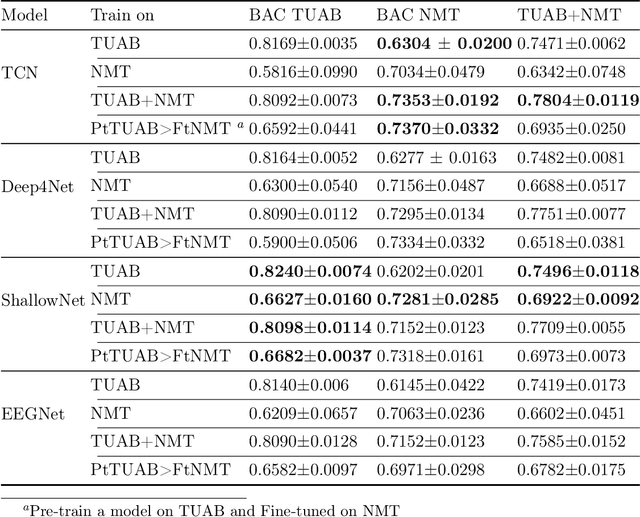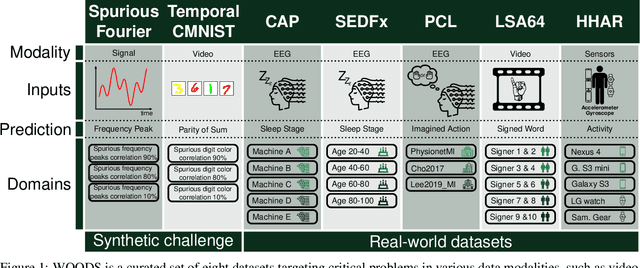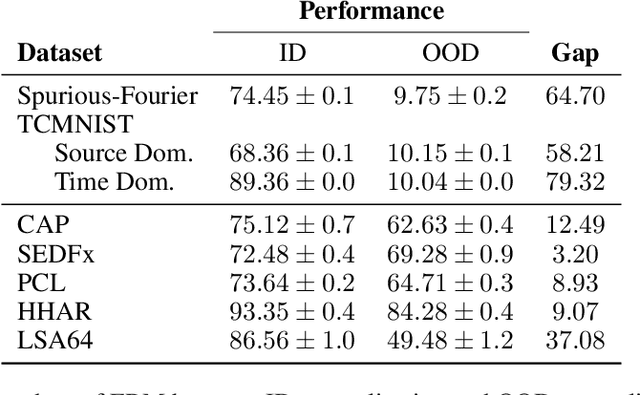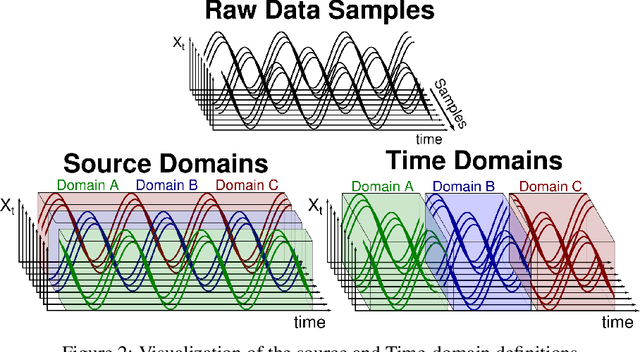Mohammad-Javad Darvishi-Bayazi
VFA: Vision Frequency Analysis of Foundation Models and Human
Sep 09, 2024



Abstract:Machine learning models often struggle with distribution shifts in real-world scenarios, whereas humans exhibit robust adaptation. Models that better align with human perception may achieve higher out-of-distribution generalization. In this study, we investigate how various characteristics of large-scale computer vision models influence their alignment with human capabilities and robustness. Our findings indicate that increasing model and data size and incorporating rich semantic information and multiple modalities enhance models' alignment with human perception and their overall robustness. Our empirical analysis demonstrates a strong correlation between out-of-distribution accuracy and human alignment.
Amplifying Pathological Detection in EEG Signaling Pathways through Cross-Dataset Transfer Learning
Sep 19, 2023



Abstract:Pathology diagnosis based on EEG signals and decoding brain activity holds immense importance in understanding neurological disorders. With the advancement of artificial intelligence methods and machine learning techniques, the potential for accurate data-driven diagnoses and effective treatments has grown significantly. However, applying machine learning algorithms to real-world datasets presents diverse challenges at multiple levels. The scarcity of labelled data, especially in low regime scenarios with limited availability of real patient cohorts due to high costs of recruitment, underscores the vital deployment of scaling and transfer learning techniques. In this study, we explore a real-world pathology classification task to highlight the effectiveness of data and model scaling and cross-dataset knowledge transfer. As such, we observe varying performance improvements through data scaling, indicating the need for careful evaluation and labelling. Additionally, we identify the challenges of possible negative transfer and emphasize the significance of some key components to overcome distribution shifts and potential spurious correlations and achieve positive transfer. We see improvement in the performance of the target model on the target (NMT) datasets by using the knowledge from the source dataset (TUAB) when a low amount of labelled data was available. Our findings indicate a small and generic model (e.g. ShallowNet) performs well on a single dataset, however, a larger model (e.g. TCN) performs better on transfer and learning from a larger and diverse dataset.
WOODS: Benchmarks for Out-of-Distribution Generalization in Time Series Tasks
Mar 18, 2022



Abstract:Machine learning models often fail to generalize well under distributional shifts. Understanding and overcoming these failures have led to a research field of Out-of-Distribution (OOD) generalization. Despite being extensively studied for static computer vision tasks, OOD generalization has been underexplored for time series tasks. To shine light on this gap, we present WOODS: eight challenging open-source time series benchmarks covering a diverse range of data modalities, such as videos, brain recordings, and sensor signals. We revise the existing OOD generalization algorithms for time series tasks and evaluate them using our systematic framework. Our experiments show a large room for improvement for empirical risk minimization and OOD generalization algorithms on our datasets, thus underscoring the new challenges posed by time series tasks. Code and documentation are available at https://woods-benchmarks.github.io .
 Add to Chrome
Add to Chrome Add to Firefox
Add to Firefox Add to Edge
Add to Edge